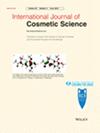Magnolia biondii, a plant containing many magnolian-like compounds in its flowers or buds, exhibits anti-inflammatory and antiallergic effects; however, no study has addressed its effect on alleviating ultraviolet light (UV)-induced skin damage. We thus aimed at studying the effects of M. biondii flower extract (MB) on UVB-induced skin damage and determine the relationship between cell damage and damage-associated molecular patterns (DAMPs).
Reconstructed epidermal models and foreskin samples were selected to detect cellular reactions after UVB irradiation and MB treatment. MTT, haematoxylin–eosin and immunofluorescence staining were used to examine total viability, sunburned cells and expression and migration of DAMPs at 16 or 48 h. Prostaglandin E2 (PGE-2) and interleukin 8 (IL-8) levels were measured using enzyme-linked immunosorbent assays. A clinical UVB-damaged test was carried out on human arms subjected to MB pre- or post-treatment. Human skin probes were used to measure erythema, melanin, ITA° and transepidermal water loss (TEWL), while skin photos were captured using the VISIA system.
MB is rich in lignans such as magnolin, pinoresinol dimethyl ether and fargesin, and shows weak UV absorption at 280–320 nm. Coculturing with MB for 16 or 48 h after UVB irradiation improved the tissue viability and structure of Skinovo-Epi, and reduced the expression and migration of high mobility group box protein B1 (HMGB1) as well as the expression of IL-8 and PGE-2. In the excised foreskin treated with MB after UVB irradiation, the generation of 8-hidroxy-2-deoxyguanosine and nuclear transfer of HMGB1 were reduced. When pre-treated with MB for 3 days, UVB-induced skin erythema and ITA° were significantly decreased. When post-treated with MB for 5 days, a decrease in skin erythema, melanin and TEWL values and an increase in skin ITA° were observed.
Treatment with MB attenuated UVB-induced skin damage, such as erythema, pigmentation and skin barrier function, by improving the tissue viability and structure and reducing sunburned cells and skin inflammation. This effect may be related to DNA damage, which causes the migration of HMGB1 from the nucleus to the outside of the cell to induce skin inflammation.


